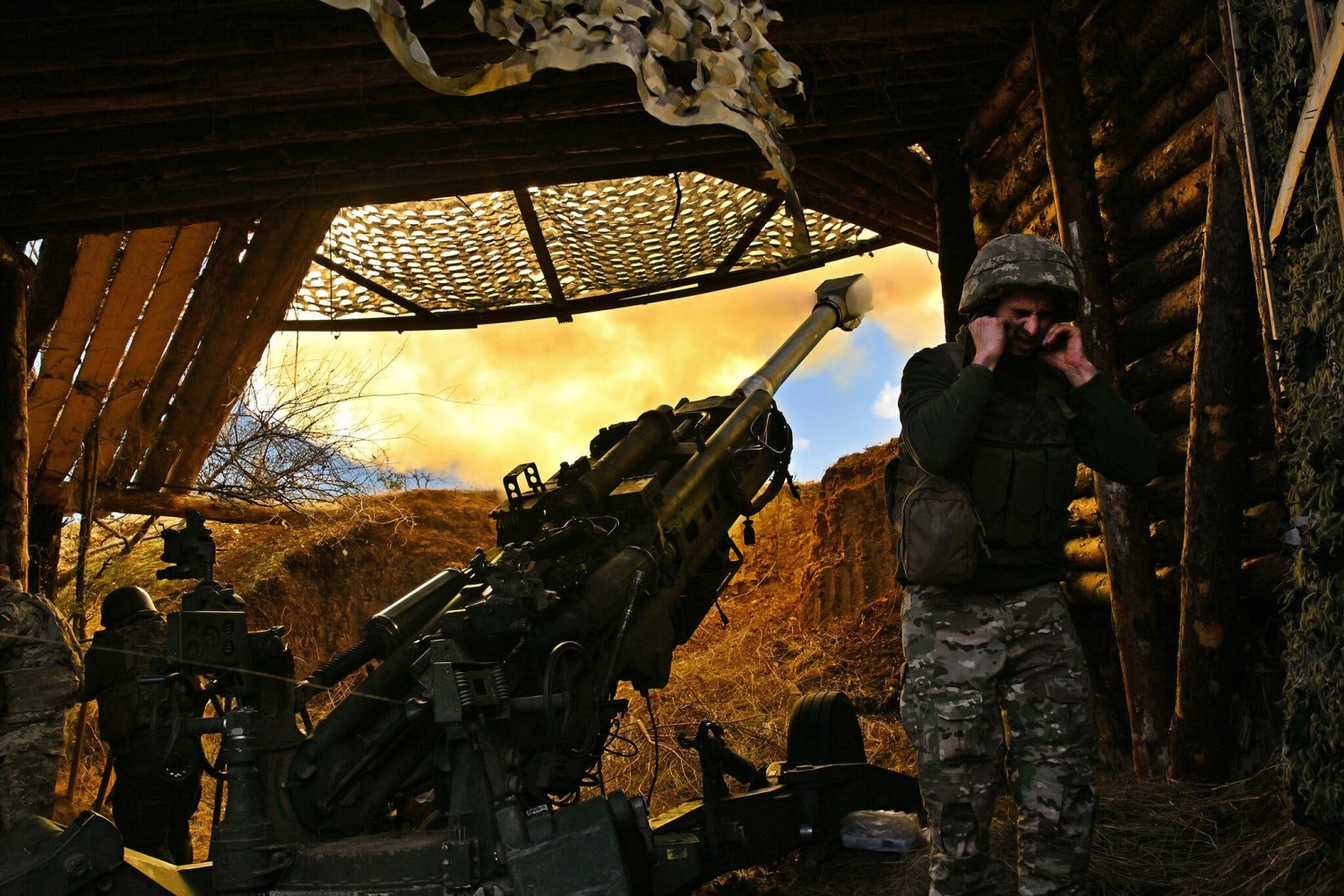
This article is more than
2 year old
With his prime-time vow to send more weapons to both Ukraine and Israel, President Biden sought to make clear on Thursday that the United States was not prioritizing one war over the other.
But hours earlier, a Defense Department official said that tens of thousands of 155-millimeter artillery shells promised to Ukraine would be diverted to Israel.
The shells are an example of the American weapons that officials and experts say are needed in both wars, which could stretch the U.S. capacity to keep up with demand. That will be especially true if Israel’s expected ground offensive in Gaza, in response to Hamas attacks, lasts for months.
“You’re going to probably see a steady flow of weapons continuing to flow into Israel,” Sabrina Singh, the deputy Pentagon spokeswoman, said last week.
Some of those shipments could include the same types of artillery and bombs that Ukraine has relied on in its own 20-month ground war to defend its territory from Russia.
For the most part, Ukraine and Israel are fighting different kinds of wars, and have different capabilities and needs, according to current and former U.S. national security and congressional officials.
In recent months, Ukraine’s counteroffensive has faced stiff resistance from Russian mines, trenches and other defenses, and the grinding artillery campaign has devolved into a war of attrition.
Reactions to the Conflict in the U.S.
Israel is preparing to launch a very different kind of land war — an urban fight in the densely populated Gaza Strip, which has been pummeled by Israeli airstrikes since Hamas’s attacks on Oct. 7.
“There’ll be very little overlap between what we’re going to be giving Israel and what we give to Ukraine,” Michael J. Morell, former deputy director of the Central Intelligence Agency, said last week.
Ukraine is poised to receive about $61 billion in new military aid, more than half of a $105 billion emergency package of mostly foreign assistance that Mr. Biden wants Congress to approve. Israel, whose military is far better equipped than Ukraine’s, would receive about $14 billion for its air and missile defenses in the proposal, which the White House announced on Friday.
Still, with global stockpiles of 155-millimeter shells and other weapons systems already thinned out, and manufacturers struggling to keep up with demand, “there will be trade-offs” in supplying both wars the longer they last, Mark F. Cancian, a former White House weapons strategist who is now a senior adviser at the Center for Strategic and International Studies in Washington wrote in an analysis.
Here are three key weapons systems that Israel and Ukraine may need from the United States.
Artillery ammunition
Perhaps more than any other weapons, the NATO-standard 155-millimeter shells will be in high demand, as both Israel and Ukraine use them against targets within a few dozen miles.
The United States has sent Ukraine more than two million 155-millimeter rounds, and Europe has delivered hundreds of thousands more, since Russia’s invasion in February 2022. But Western military stockpiles are now nearing “the bottom of the barrel,” a top official in the North Atlantic Treaty Organization, Adm. Rob Bauer of the Netherlands, recently said.
In January, the Pentagon said it would tap into an American stockpile in Israel and ship hundreds of thousands of 155-millimeter shells to Ukraine. The stockpile is located in Israel, the closest American ally in the Middle East, to quickly supply arms across the region when needed.
About half of the shells in the stockpile in Israel were shipped out last winter. The Pentagon now plans to redirect at least some of the rest to Israel’s military, the Defense Department official said.
Maj. Charlie Dietz, a Pentagon spokesman, declined to discuss the details of any munitions transfer but said the top U.S. priority “was ensuring Israel has the resources it needs during this time.”

Still, Ukraine has at times fired thousands of artillery rounds a day in its counteroffensive, and military officials in Kyiv and across NATO have long feared they will soon run out.
Manufacturers in the United States and Europe are pushing their ammunition production into high gear, but it will likely be years before they can refill the Atlantic alliance’s stockpiles and meet Ukraine’s demands — not to mention Israel’s.
Smart bombs
After Hamas attacked, the first shipment of weapons that the United States sent Israel included about 1,000 small-diameter bombs, which weigh about 250 pounds each and use a GPS navigation system to track and strike targets.
Officials said Israel is pressing the United States for more of the bombs, which are launched from aircraft. A ground-based version has also been promised to Ukraine and is expected to be delivered this fall.
Since 2010, Israel has bought more than 8,500 small-diameter bombs from the United States, according to the Stockholm International Peace Research Institute.
Separately, experts said, the Pentagon has procured more than 34,000 of the bombs since 2018 in what an Air Force general described in 2021 as a healthy inventory.
That means Ukraine and Israel are not expected to have to compete for the bombs.
“The U.S. can meet the needs of both Israel and Ukraine for the time being,” said Bradley Bowman, a former U.S. Army officer and senior military expert at the Foundation for Defense of Democracies in Washington.
Stinger missiles
Israel and Ukraine generally rely on vastly different systems for protection from airstrikes.
Israel’s vaunted Iron Dome system is the backbone of its air defenses. Ukraine’s Western-supplied air defenses consist mainly of systems from the United States, including the Patriot system, and from Germany and Norway.
Mr. Cancian said that both countries have “shoot and scoot” Stinger missiles, which Ukraine has used to down Russian-controlled drones and in other attacks from the sky. Israel may particularly need them in a ground invasion.

The missiles could be ideal for urban combat in Gaza City: Lightweight, small and highly portable, the Stingers are fired from a shoulder launcher. The U.S. could be asked to provide Israel with the Avenger, a specialized Humvee truck that can fire up to eight Stinger missiles in quick succession. Kyiv has received 20 Avengers from the United States since late November.
Israel and Ukraine also have the Patriot air defense system. But Stingers are far cheaper than Patriot missiles, making them more cost-effective to use for downing drones and Hamas’s inexpensive artillery rockets.
But Stinger inventories are “extremely limited” and few are being produced, Mr. Cancian said.
The United States has already given Ukraine more than 2,000 Stinger systems, and Taiwan has likely received some as well against China’s military threats, he said.
Lara Jakes is a foreign correspondent focused on the war in Ukraine. She has been a diplomatic and military correspondent in Washington and a war correspondent in Iraq, and has reported and edited from more than 60 countries over the last 25 years. More about Lara Jakes
Eric Schmitt is a senior writer who has traveled the world covering terrorism and national security. He was also the Pentagon correspondent. A member of the Times staff since 1983, he has shared four Pulitzer Prizes. More about Eric Schmitt